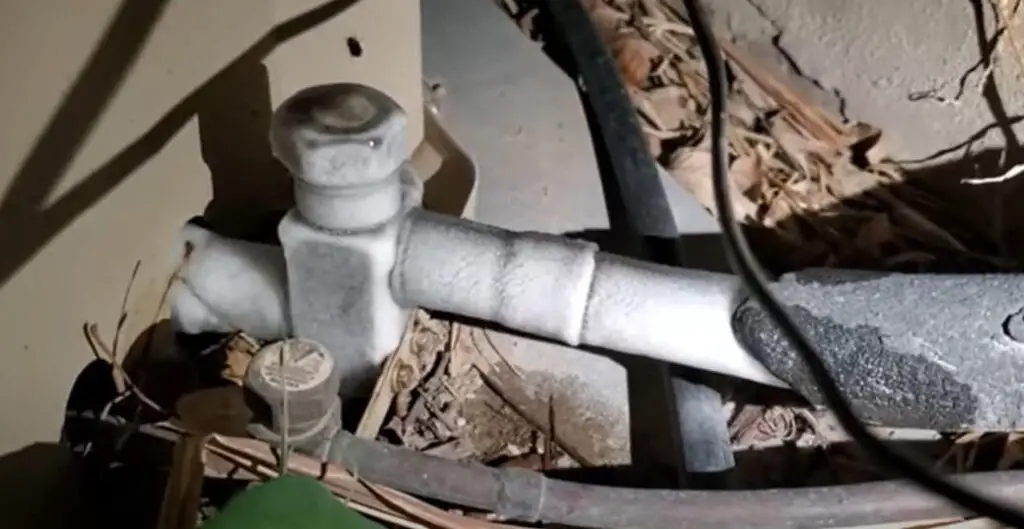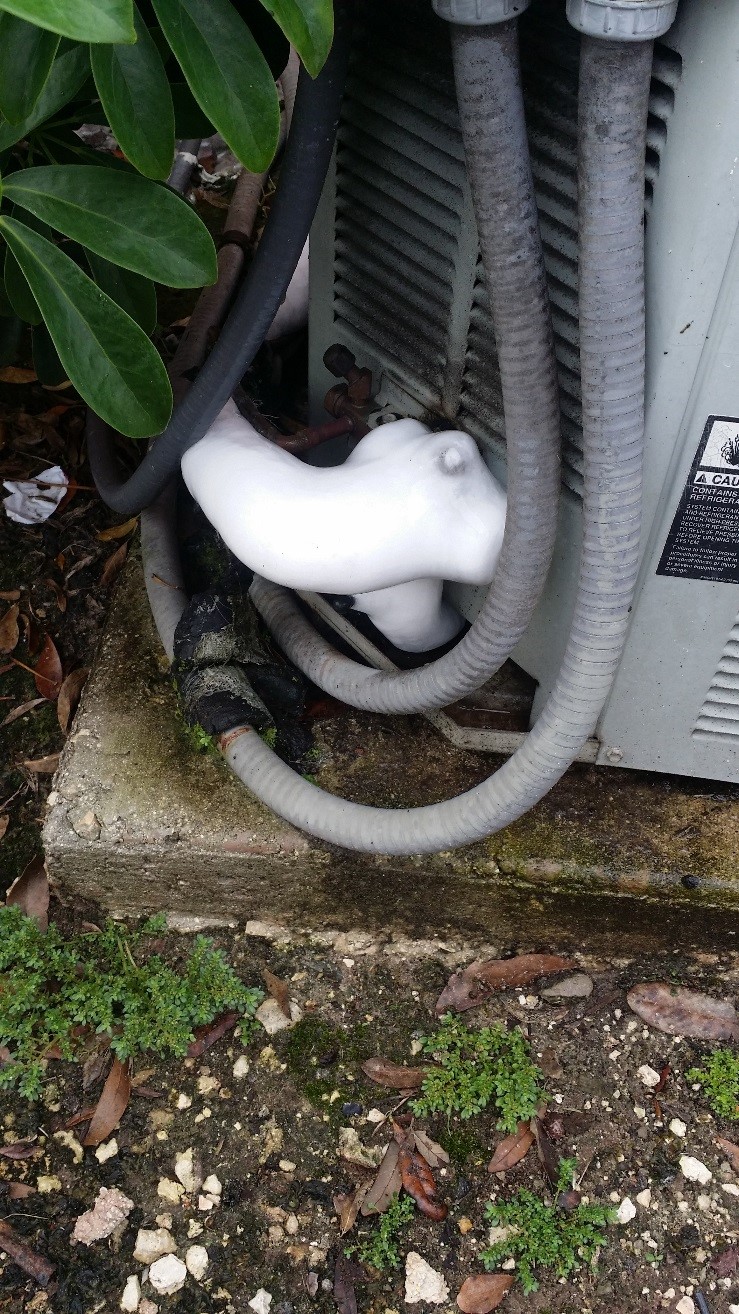In this article below you will discover a good deal of awesome details all about Air Conditioner Frozen? How To Fix your Frozen AC Line.

Intro
Discovering that your AC pipeline is iced up can be concerning, especially throughout hot summer months when you rely upon your ac system the most. Comprehending what to do in such a situation is critical to avoid more damage to your air conditioning system and ensure your convenience inside your home.
Comprehending the Causes
Numerous aspects can contribute to the freezing of an a/c pipeline. Comprehending these causes can aid you attend to the problem effectively.
Absence of Airflow
One typical reason for a frozen air conditioning pipe is inadequate air movement. When the air movement over the evaporator coil is limited, it can create the coil to go down below freezing temperature level, bring about ice development on the pipeline.
Low Refrigerant Levels
Inadequate refrigerant levels in your air conditioner system can additionally lead to a frozen pipe. Reduced cooling agent levels can cause the stress in the system to go down, resulting in the cold of wetness on the evaporator coil.
Cold Weather Conditions
In cooler climates, freezing temperatures outside can add to the freezing of a/c pipes. If your air conditioner unit is not effectively protected or if there are leakages in the ductwork, cold air can penetrate the system, causing the pipe to freeze.
Dirty Air Filters
Unclean or clogged up air filters can restrict airflow in your air conditioning system, causing numerous concerns, consisting of an icy pipeline. It's essential to replace or clean your air filters frequently to ensure appropriate airflow and protect against ice build-up.
Indications of a Frozen AC Pipe
Acknowledging the indications of an icy a/c pipeline is vital for prompt action.
Decreased Airflow
If you discover a significant decrease in air flow from your vents, it could show a frozen pipeline.
Ice Buildup on the Pipe
Visible ice build-up on the refrigerant line or the evaporator coil is a clear sign of a frozen air conditioner pipe.
Odd Sounds from the Unit
Unusual noises, such as hissing or gurgling, coming from your air conditioner unit can indicate that there's ice existing on the pipeline.
Immediate Actions to Take
When confronted with a frozen air conditioning pipeline, it's essential to act rapidly to avoid additional damages to your air conditioning system.
Switching off the AC
The initial step is to turn off your ac unit to stop the system from running and aggravating the concern.
Looking for Blockages
Check the area around the indoor unit for any kind of blockages that may be blocking air movement, such as furnishings or curtains.
Defrosting the Pipe
You can utilize gentle approaches like putting towels soaked in cozy water around the frozen pipeline to aid thaw it gradually.
Safety nets
Taking preventive measures can aid prevent future events of a frozen air conditioner pipeline.
When DIY Methods Fail
If your efforts to thaw the pipe or address other concerns are unsuccessful, it's time to contact an expert.
Significance of Hiring a Professional HVAC Technician
A certified HVAC professional has the knowledge and devices necessary to detect and fix concerns with your a/c system securely and successfully.
Normal Maintenance Checks
Set up normal upkeep consult an expert HVAC service technician to make certain that your air conditioner system is running successfully.
Transforming Air Filters
Consistently change or cleanse your air filters to avoid airflow restrictions and maintain optimum efficiency.
Insulating Exposed Pipes
If your air conditioner pipelines are subjected to cold temperature levels, think about insulating them to stop freezing throughout winter season.
Looking For Professional Help
If DIY techniques fail to solve the issue or if you're not sure concerning how to proceed, it's ideal to seek aid from a certified HVAC professional.
Verdict
Managing a frozen air conditioning pipe can be a frustrating experience, yet understanding how to respond can aid lessen damage and recover comfort to your home. By recognizing the reasons, identifying the indications, and taking timely action, you can successfully attend to the concern and protect against future events.
G UP? HOW TO FIX IT?
It happens all over America. And the rest of the world probably. It’s the hottest day ever and for some darn reason your AC isn’t cooling the house. You fiddle with the thermostat to try and fix the problem. Nada. All you can do now is go outside and check the AC unit. You make your way there and find your air conditioner unit is frozen! But how?
In this post we’ll cover how you can tell that your air conditioner has frozen (other than the obvious reasons), what could have caused the freeze, and some of the things you can do about your AC freezing up. And if you have a frozen heat pump condenser, read our blog about it to learn what to do! But remember, it is always best to avoid your AC freezing up with an AC tune up. And if you are moving into a home, it's critical to get HVAC inspection so that you are aware of an AC problems before you move in.
Keep reading and you may be able to fix the frozen AC yourself. If you can’t, call an HVAC specialist. If you live in Maryland, call SuperTech HVAC for AC repair. We’ll take care of it.
How Does An Air Conditioning Unit Work?
How you probably imagine an AC works is wrong. Contrary to popular belief, an AC system does not inject cool air into a building. Instead, it removes the heat from inside and transfers it outside. Cool huh? (Pun intended).There are 4 major components among the 3 stations of an air conditioning system: the evaporator coil, the compressor, the condenser, and the refrigerant – a special chemical that links everything together through a closed loop system.
Station 1:
Warm indoor air is sucked into the return vent, through a filter, and blows over the evaporator coil. The heat is absorbed into the cold refrigerant, turning it from liquid to gas. The air, which is now cool, is blown back into the home to areas that your thermostat, i.e. you, has decided.
Station 2:
The refrigerant makes its way outside the house to the compressor, which squeezes the warm refrigerant, raising its gaseous temperature even more.
Station 3:
When the super hot vapor refrigerant reaches the condenser, the last step, the heat is expelled and absorbed into the outdoor air. The refrigerant instantly cools, which changes it from gas back to liquid form. The cold liquid refrigerant is now ready to return to station 1 and repeat the process.
Is Your AC Freezing Up? Here Are The Signs:
As you may have guessed, your air conditioner unit freezing up on a hot day is not normal.
If this happens, there's no need to panic. Often the issue can be solved with a little troubleshooting. If the AC unit is left frozen for too long however, you may find yourself with a bigger problem.
First things first, how do you know your AC is frozen?
Well, the obvious sign is the ice on your refrigerant line-set pipe. Simply check between your outdoor AC unit and your home's exterior wall to see whether your AC line frozen.
You might also have a frozen evaporator coil. This one's not as easy to check. You'll need to open a panel on the indoor unit to inspect. Don't do this unless you're handy. If you aren't, call an HVAC pro like SuperTech HVAC or you may damage something in the process.

Do you like reading about Have a Frozen AC Line? Here’s How to Fix It? Post a remark down below. We'd be glad to hear your reactions about this entry. We are looking forward that you come back again in the near future. I beg you take the opportunity to share this blog entry if you enjoyed it. Kudos for your time. Kindly come by our site back soon.
This Post